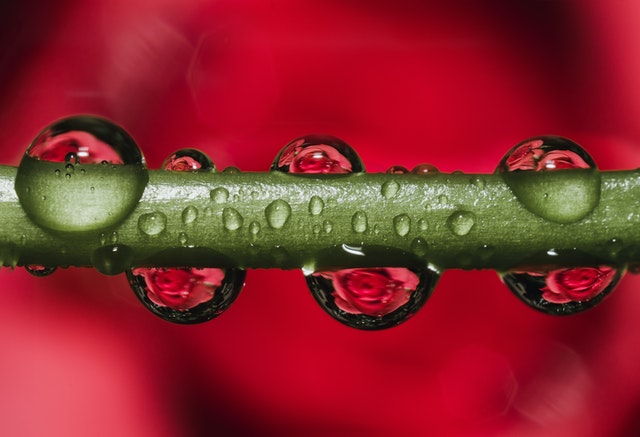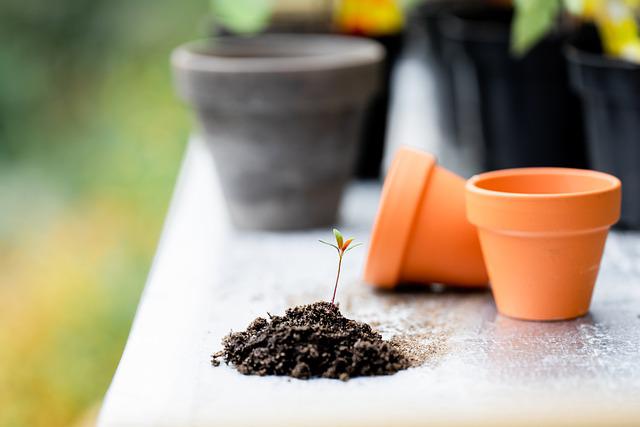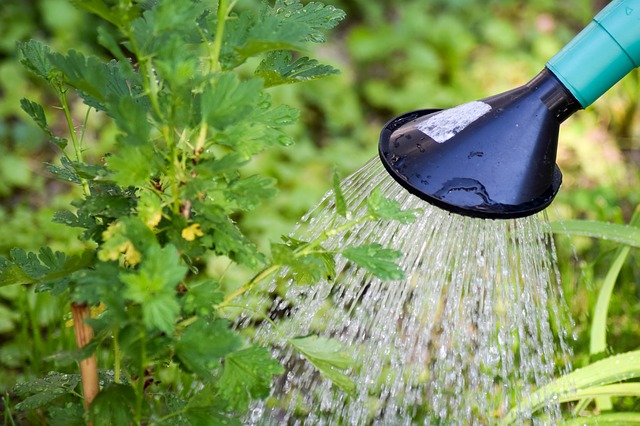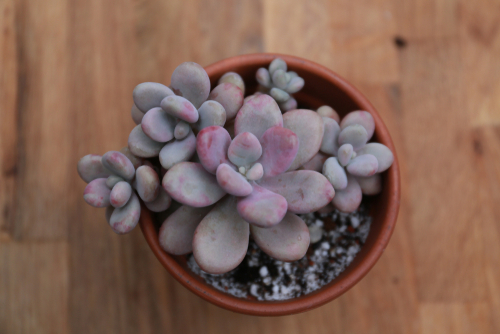If you are looking for an easy to raise and gorgeous plant for your home or garden, then the moonstone succulent is perfect. The moonstone succulent is a native flower of Mexico. It is known as a captivating plant and very easy to propagate. Whether you’re an experienced gardener or just starting out, the moonstone succulent’s hardiness and unique beauty make it a perfect addition to any collection, providing a touch of elegance and charm to any indoor or outdoor space.
It has unique silvery leaves and looks exquisite. It is a small plant and can be arranged outside and inside. It is one of the easiest flowers to take care of and blooms beautifully. If you want to have this flower in your home, you need to know how to take care of a moonstone succulent.
It needs the right amount of moisture, light, and even soil. Here we will look at the flower’s features, what makes it so different and how to take care of it properly to give it vitality and longevity. Let’s take a look!
What Is Moonstone Succulent Plant?

The moonstone succulent plant is a desert-dwelling flower. It is beautiful, with its leaves resembling moonstone gems, hence the name. The leaves of this plant are round and egg-shaped, having a variety of colors from silver-blue, pink, purple, pale green, and peach.
They have a unique shine and texture when put under light or sunlight. Depending on the color of the moonstone succulent, some varieties of the flower are also called, ‘Red Beauty’ or ‘Pink Moonstones’. This plant grows very slowly and also has a long life span.
Some flowers found have been known to be over 400 years old. They are mostly found in high altitudes of around 7,000 feet in the wild.
They do not require regular irrigation or care and can grow for a long time. They do, however, require specific habitats to grow inside the house, so make sure that all of their requirements are met.
Origin and Classification
The Moonstone succulent is classified as Pachyphytum oviferum which means ‘thick plant bearing eggs’. It is part of the genus Pachyphytum of the plant kingdom. It is also called Sugar Almond Plant or just simply moonstone.
It originated from the deserts of Mexico in San Luis Potosa, which is a state with rocky cliffs and a humid climate. The moonstone succulent was first found in this area at an altitude of 1,200 meters, before being transferred to other states and it became one of the most desired flowers to have in homes and gardens because of its beautiful colors and texture.
Features of Moonstone Succulent Plant
Moonstones are very slow-growing succulents. They start small and can keep growing. These plants grow in the desert and thus cannot survive in moist soil and humid temperature. They have a few distinguishing features that make them truly unique.
1. Height
This succulent typically grows to be about 12 inches tall and 6 inches wide, with fleshy, blue-green leaves that are dotted with white. That height and width makes it an ideal houseplant as you won’t need to worry about it getting out of control.
2. Flowers
The flowers produced by Moonstones are bell-shaped and have no fragrance. The flowers of the Moonstone Succulent are white and have five petals. They bloom at night and close up during the day. The leaves are the reason most people buy this plant but the flowers are beautiful too.
3. Stems and Leaves

The stems are white and grow up to 12 inches in length. Leaves grow on these stems. The leaves of this plant can grow up to 2 inches in length and 1 inch in width. These leaves vary in color, from blue, green, purple, pink, peach, etc. They are almond in shape and are arranged beautifully in a rosette.
4. Reproduction
This plant reproduces in winter and early spring. The growth and blooms are produced. These blooms have red-orange petals and sepals. The pigmentation of the sepals is the same as that of the leaves. These blooms grow into bell-shaped flowers which do not have any fragrance.
Basic Care of Moonstone Succulent Plant
The moonstone succulent plant is one of the easiest to propagate and grow. They can survive without constant care, but there are a few requirements of their habitat that need to be taken care of. Here we will go into details of the things you need to take care of a moonstone succulent plant.
1. Size & Growth
The monsoon succulent is a slow-growing plant. It only needs to be re-potted after a couple of years. It stays compact but spreads around 30 cm wide. It can move up around 2.5 to 5 cm large. You need to make sure that it is potted in a pot that can hold the size of the plant.
2. Sunlight Requirements
Moonstone is a sun-loving plant. It grows all year round in the sun. You need to make sure that you choose a sunny spot to place this plant. If you are in an area where there is scorching sun, then make sure that it has shade to prevent it from sunburn.
3. Light Requirement

If this plant is kept indoors, then you need to make sure that it is near a sunny window. If there are no windows, then you can also use a grow light. You have to make sure that the plant is moved outside in the sunlight in the hot season.
4. Water Requirements
Due to it being a desert plant with low rain and a dry environment, the moonstone succulent does not require a lot of watering. You need to be careful when providing water to this plant because it will die if you overwater it.
If you are not sure then it is better to underwater it, rather than killing it by overwatering it. This is a succulent plant, which means it stores water in its thick leaves and stem, so it will only need water when its soil is dry. If the plant gets too much water, it starts to turn yellow and the leaves feel mushy and soft to the touch.
It can survive even in relatively drier soil. On the other hand, in winter this plant actively grows, so you need to make sure that it is given more water, as compared to summer. To water this plant, you need to apply the ‘soak and dry’ watering method.
This method says to only water the plant when the first inch of the soil is completely dry. If you accidentally put too much water, then let the plant sit in it for a while, and then drain the excess water.
5. Soil Requirements
Soil is one of the most vital components when taking care of a moonstone succulent. The soil needs to drain nicely, is loose, gritty, and can be aerated. Aerating will allow the water, air, and vitamins to enter the moonstone. If the soil is sticky or compact then it will store water, which as mentioned, can kill the plant.
The best soil for moonstones is cactus or succulent plant soil. The solid should have 50 to 70 percent coarse sand, perlite, or pumice, to aerate the plant and assist in draining excess water. The motive of pumice or perlite is to aid in aeration and drainage.
If you want to make your own soil then the best ratio is to use two components of sand and two for gardening soil, and one-part pumice or perlite. You can also use compost and sand.
6. Temperature & Humidity
Moonstone succulents can be grown both indoors and outdoors. They need to be in a sunny spot with a high temperature of at least around 65-80 °F.
They also require low humidity. Since these plants need high temperature they cannot survive in a temperature lower than 20°F. If you live in an area where the winter gets very cold, then you need to move your plant inside until the summer months.
7. Drought & Disease Resistance
Moonlight succulents are very drought resistant. Since they need hot temperatures, sunlight, and a lack of humidity, they can survive without water for longer than other plants. They ideally need one inch of water per weak to remain healthy. This plant is very durable and can resist diseases and pests if taken care of properly.
8. Fertilizing
Fertilizing the moonstone succulent is very important if you want the plant to thrive. You do not need a special fertilizer to accomplish this, any general water-soluble plant food or cactus fertilizer will provide the vitamins the plant needs. It is best to fertilize the plant when it is growing, or if you are using cactus fertilizer, then you need to fertilize only once a year.
9. Potting & Repotting

Moonstone succulents are very easy to pot and repot if their growing requirements are kept in mind. You just need to follow the few steps:
Pick a spot with lots of sunlight in the garden or home.
Make sure that the soil provides good drainage if it is outside. Alternatively, for indoor potting, you can use self-draining pots, which have holes from where excess water is drained out.
Fill the pot with gravel at the bottom and then potting mix.
Fill it with soil and plant the moonstone succulent as deep as in the pot that you bought it from.
Make sure that the temperature of the area where the plant is being kept does not go below 20°F (-7° C)
Since these are compact plants and can fold to 12 inches, they can be removed inside and outside easily.
If you are planting more than one plant, then you need to keep distance between them to that they can grow independently and do not have any issues with water drainage.
10. Pruning Requirements
Moonstones do not require any special pruning. All you need to do to maintain its neat appearance is to cut the damaged and dead leaves.
How to Propagate Moonstone Succulent
Propagating moonstone succulents is one of the easiest tasks out of all the plants available. This can be done in two ways; leaf-cutting and cuttings.
If you want to propagate your moonstone using the leaf-cutting method, which is the most common method, then you need to follow the given steps.
Step 1
Your plant needs to be dry before you can propagate it, so avoid giving it any water, at least two days before.
Step 2
When your current plant is in the growing season, which happens to be winter, you need to cut the leaves of the plant.
Step 3
Put the leaves in an environment that is slightly cool to dry them.
Step 4
Take a sand container. Place the leaf flat and give it a little water.
Step 5
The cutting will soon develop roots. When the roots are at least 1-inch-long, take the leaf from the container and place it in a pot.
Step 6
Grow the new plant as you would normally with any moonstone succulent.
This method is quick, gives fast results, and is the most often used to propagate moonstones succulent.
Cuttings
The other method to propagate a moonstone is by cutting.
Step 1
Take your moonstone and from the bottom cut off 2 to 3 layers of leaves.
Step 2
After the stem is cut, leave the plant to heal for a few days.
Step 3
Take the head of the cut stem and plant it in the soil.
Step 4
Do not give it any water and do not expose it to any sunlight.
Step 5
The stem will soon develop its root system.
Step 6
You can then tend to it, like any other moonstone adult plant.
Common Problems Caring For Moonstone Succulent
A moonstone succulent is an easy plant to take care of, but if a few important requirements are not followed, then the plant can die very quickly. These are the few problems that people face.
1. Overwatering

One of the biggest issues when taking care of the moonstone succulent is the issue of overwatering. This water requires high temperature and very little water. If the water is left to remain in the soil, and is not drained, then it can kill the plant.
The leaves start to turn yellow and become mushy to the touch. The roots then start to die out before the whole plant dies. Also, when watering the plants, make sure that the water does not splash the leaves, as it can cause damage.
2. Lack of Water
If this plant is left without water for a long period, then the leaves will become wrinkly and frail. This is a sign to water the plant. Even though it is better to underwater the plant than overwater it, a few inches every week is acceptable.
3. Pests
The moonstone succulent can develop the mealybug. The way to figure out if your plant has bugs is to focus on its growth. If at any time you think the plant has stopped growing, then it could be because of bugs and those might need to be killed.
See more in this category: Monstera Lechleriana
Outro
The moonstone succulent is one of the most beautiful and easy plants to grow. It requires constant sunlight and very little water.
Care should be taken so that the plant does not burn and neither should be in temperature below 20°F. They grow slowly and can live for a long time. They prefer hot and dry temperatures so should be kept away from a humid atmosphere.
Frequently Asked Questions
How do you care for a moonstone succulent?
First, choose a sunny spot for your plant. Moonstone succulents love bright light, so a south-facing window is ideal. If you can’t provide enough natural light, consider using artificial grow lights.
Next, water your plant regularly, letting the soil dry out completely between waterings. Moonstone succulents are native to arid regions of Mexico, so they’re used to living in very dry conditions. Over-watering can be fatal to these plants, so it’s important to err on the side of caution.
Finally, be sure to give your plant plenty of room to grow. These succulents can reach up to a foot in height and width, so choose a pot that’s large enough to accommodate future growth.
Are Moonstone succulents rare?
Moonstone succulents are very rare plants. These have beautiful chubby leaves which have a layer of white powder on their leaves. It is in high demand because of its unique appearance, lovely color palette, and ease to take care of.
How can you tell if a moonstone is a succulent?
A moonstone is succulent when they are egg-shaped. They flower in winter and early spring with red-orange petals. While most succulents are green, moonstone plants can range in color from white to pink to purple. In addition, their leaves are often variegated or have a waxy coating. When cared for properly, moonstone succulents can thrive indoors or outdoors.

Hey, I’m Lisa and I’ve been an avid gardener for over 30 years. I love writing, talking and living in the garden! Feel free to connect with me on my socials below

